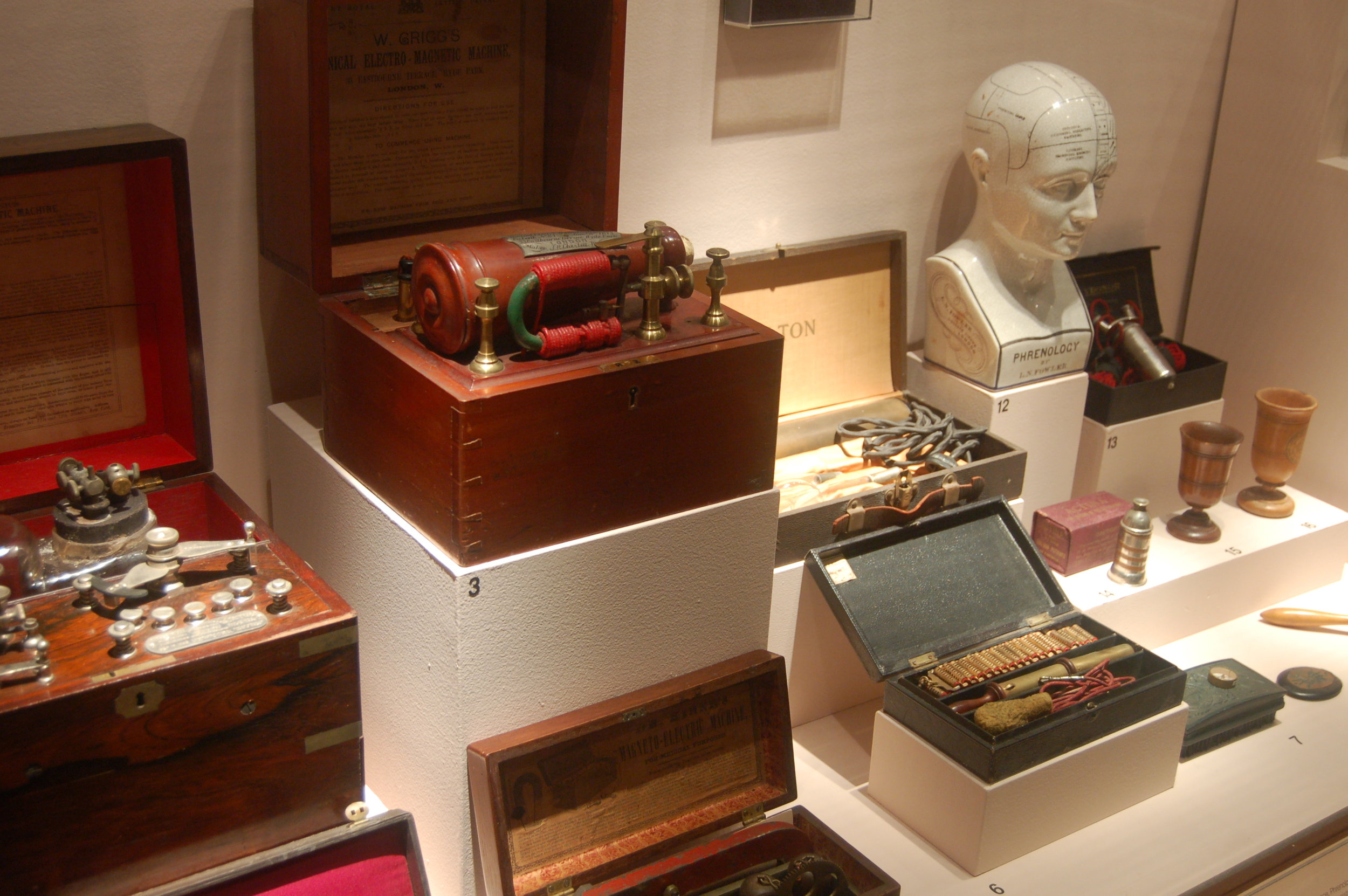Dr. Liston and the Surgery That Killed Three People
/A new exhibition has recently opened at the Bruce Museum: The Dawn of Modern Medicine: Selections from the Medical Artifact Collection of M. Donald Blaufox, MD, PhD. This exhibit chronicles the changing field of medicine throughout the 19th century, including the advent of anesthesia, germ theory, and diagnostic instruments like x-ray machines and stethoscopes. It was a fascinating time of scientific advancement and discovery, and one of the doctors operating during this time period was Dr. Robert Liston (1794 – 1847).
Dr. Liston was an English surgeon, and one of some renown. In the days before anesthesia, surgeries were a dangerous and traumatic affair. Patients were conscious as they were operated on and surgeries needed to be as fast as possible to minimize pain, panic, and blood loss. One in four people died after surgery, either on the operating table or from infection after. What about Dr. Liston? Only one in ten of his patients died.
His success stemmed from two different factors. For one thing, he washed his hands. In those days, surgeons wore their bloodied aprons proudly. It was considered finicky and prudish to be preoccupied with cleanliness, and surgeons would often go from one surgery to another covered in blood and pus from their previous operations. Many people fell ill and died from the resulting infections.
Dr. Liston not only washed his hands, he washed his medical instruments between surgeries as well. These small efforts at obtaining a cleaner surgical environment doubtlessly saved the lives of many of his patients.
The other factor in his survival rate was a matter of great pride for Dr. Liston: Speed. Dr. Liston was famous for his incredible surgical speed and could amputate a leg in only two and a half minutes. When you are enduring surgery while awake and aware, you want a surgeon who will get it done quickly. People drawn by this reputation would sit in his waiting room for days, hoping to be seen.
Not only was Dr. Liston fast, he was also a showman. Many surgeries of the time were carried out in an operating theater, a room in a hospital or university where spectators could watch. Before a surgery, Dr. Liston would tell the audience “Time me gentlemen, time me!” to put his legendary speed to the test.
For the most part, his speed helped patients survive. Unfortunately, other times it backfired dramatically. During one leg amputation, he accidentally castrated a patient in his haste to remove the limb. Another mishap was even more dire.
On that fateful day, Dr. Liston was performing another leg amputation. As he moved with lightning speed, he accidentally cut off the fingers of the assistant who had been holding the patient down. Then as he brought his knife back up, he slashed the coat of a spectator.
The spectator fell over, dying immediately of fright. Though the assistant and patient survived the immediate procedure, they died not long after from infection. Thus, despite Dr. Liston’s successes, he became the only surgeon in known history to have a 300% mortality rate from a single operation.
Even though Dr. Liston’s failures were uniquely memorable, he still saved far more lives than he cost. He eventually became the first surgeon to use anesthesia during surgery, and invented medical tools like the Liston knife that are still in use today. Also - there’s a chance that the story of his deadly surgery may just be an urban legend. No first hand account exists for this event, and it may be more exaggeration than truth. Sadly, as with the case of many stories from history, we may never know exactly what happened that day.
Today the odds of dying because of surgery are thankfully much lower than even Dr. Liston’s one in ten number. Still, he was a true expert during his time, even if he might have killed three people at once. He was a talented but imperfect surgeon, and that is what he will be remembered for.
Kate Dzikiewicz, Paul Griswold Howes Fellow
















